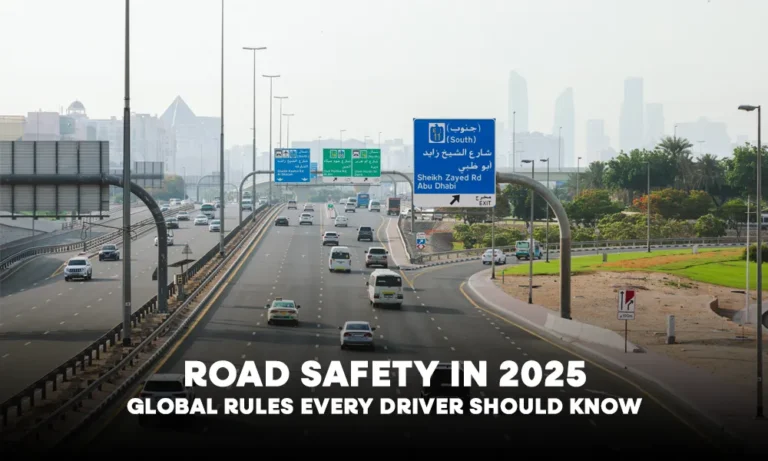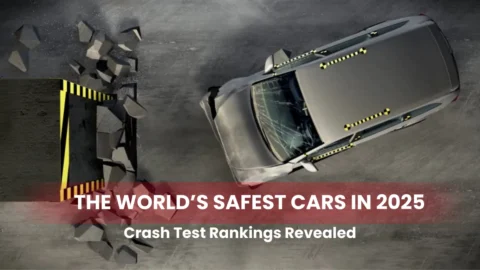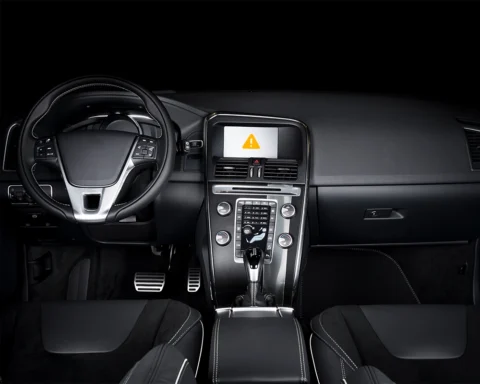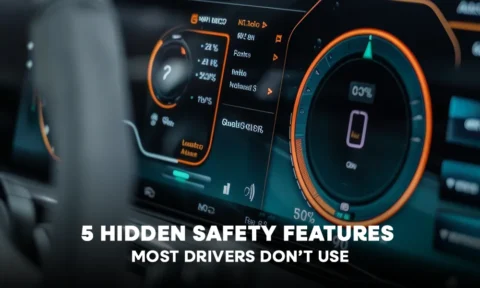Driving in 2025 has become so much more than just getting from point A to B. Today, we must navigate a world where the rules of the road are being rewritten to take into consideration changes in technology, sustainability, and safety. Whether you’re cruising through Dubai’s smart highways, winding through Europe’s eco-zones, or tackling the US’s bustling cityscapes, one thing’s clear: road safety is a global concern that is evolving fast.
So buckle up as we take a look at the driving rules being adopted globally in 2025.
Smarter Roads, Smarter Rules
Gone are the days of static traffic signs and guesswork. Roads across the world are being digitally enhanced, with AI-powered traffic systems, real-time alerts, and adaptive speed limits. In cities like Tokyo, Amsterdam, and Singapore, smart intersections now communicate directly with vehicles to reduce collisions and congestion.
What this means for drivers:
- Driving in these technologically advanced countries requires us to stay updated with our vehicle’s navigation system so that it seamlessly syncs with local traffic infrastructure.
- Also, watch out for dynamic speed zones and automated rerouting based on weather, traffic, or emergencies.
Universal Driving Standards Are Taking Shape
While each country still has its own quirks, like left-side driving in the UK and India, global bodies like the UNECE and WHO are pushing for standardized safety protocols. These are likely to take the form of uniform seatbelt laws, helmet mandates, and child restraint systems.
Key traffic regulations on which most countries agree:
- Zero-tolerance for distracted driving—many countries now treat phone use behind the wheel as a serious offense.
- Mandatory driver-assist tech—features like lane departure warnings and automatic braking are becoming standard in new vehicles.
- Cross-border license recognition—more regions are adopting digital licenses that work internationally.
- Seatbelts and other restraints – Most countries have seat belt rules in place that require drivers and passengers to always wear a seat belt in a moving vehicle. The helmet rule, too, is being followed for motorcyclists across the world
- Allow emergency vehicles to pass – Drivers must always allow ambulances, fire trucks, and police vehicles to overtake without hindrance.
Apart from these general rules, new rules specific to vehicle types are also being adopted globally. Let’s take a look at these as well.
EVs and Autonomous Vehicles: New Rules of Engagement
With electric vehicles (EVs) and autonomous cars on the rise, road safety isn’t just about human behavior anymore—it’s about machine logic, battery safety, and ethical algorithms.
These are the new rules you are likely to encounter for EVs and autonomous vehicles.
- EV-specific road signs that are popping up throughout the world—charging zones, battery swap stations, and low-emission lanes.
- Autonomous vehicle zones are being piloted in cities like San Francisco, Dubai, and Munich. Human drivers must follow special protocols when sharing roads with driverless cars.
Pedestrian & Cyclist Priority
2025 also seems to be the year when the needs of vulnerable road users are being considered. Cities worldwide are redesigning streets to prioritize pedestrians, cyclists, and micro-mobility like e-scooters and e-bikes.
What drivers need to do:
- Respect expanded pedestrian zones and bike-only lanes.
- Watch for sensor-triggered crossings that give pedestrians automatic right of way.
- Be aware of shared mobility hubs—areas where multiple transport modes converge.
Digital Enforcement Is Everywhere
With enforcement going high-tech, the chances of a camera following you wherever you go are relatively high. From AI-powered traffic cams to license plate recognition and drone surveillance, being on your best behavior when on the road has become imperative.
Global rules may include:
- Instant e-fines sent to your mobile app or email.
- Insurance-linked driving scores—your behavior on the road could impact your insurance premiums.
- Geo-fencing for speed control—your car may automatically slow down in school zones or accident-prone areas.
Final Thoughts: Driving in 2025 Is a Responsibility
Road safety isn’t just about avoiding fines or accidents—it’s about being part of a global movement toward smarter, safer, and more sustainable mobility. Universal driving standards are gradually taking shape. The advent of EVs and Autonomous Vehicles has also brought about changes to the road safety rules in many countries. 2025 has also witnessed a larger number of countries prioritizing the needs of pedestrians and cyclists. Besides, digital enforcement makes it easier than ever to catch and fine drivers who break the rules. Whether you’re a daily commuter, a cross-border traveler, or a logistics pro behind the wheel of a fleet, the rules are changing—and staying informed is non-negotiable.
So next time you hit the road, remember: it’s not just about where you’re going. It’s about how responsibly you get there.
To know more about automotive related news visit ask about cars now.







